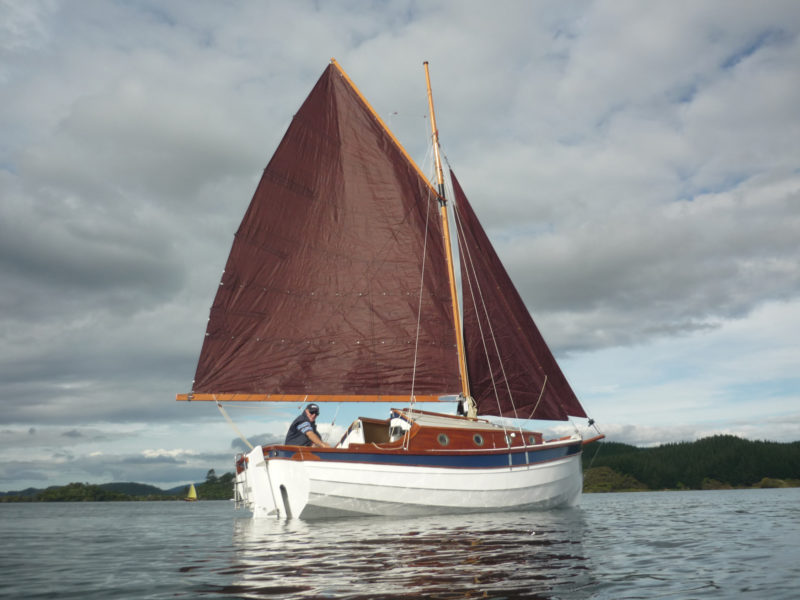 all photographs courtesy of Ralf Schlothauer
all photographs courtesy of Ralf SchlothauerWHIO’s gaff rig carries 235 sq ft of sail. When the wind fails, an outboard mounted forward of the transom provides power. The notch in the transom allows the motor to be kicked up.
Ralf Schlothauer first tried to build a boat when he was six years old. He scavenged bits of plywood and lumber from the neighborhood and then enlisted the help of his sandbox playmates. The result was not a boat but a collection of even smaller bits of plywood and lumber. In his 30s his wife gave him a copy of The Backyard Boat Builder by John Welsford. He thumbed through the pages for a few years trying to decide what kind of boat he should build. “I never really fell for any of the dinghies and small sailboats. If I was going to make my lifelong dream come true, I had to build something special, something for my whole growing family would enjoy, something that would be like a mini campervan on the water but not compromise on a classic look.”
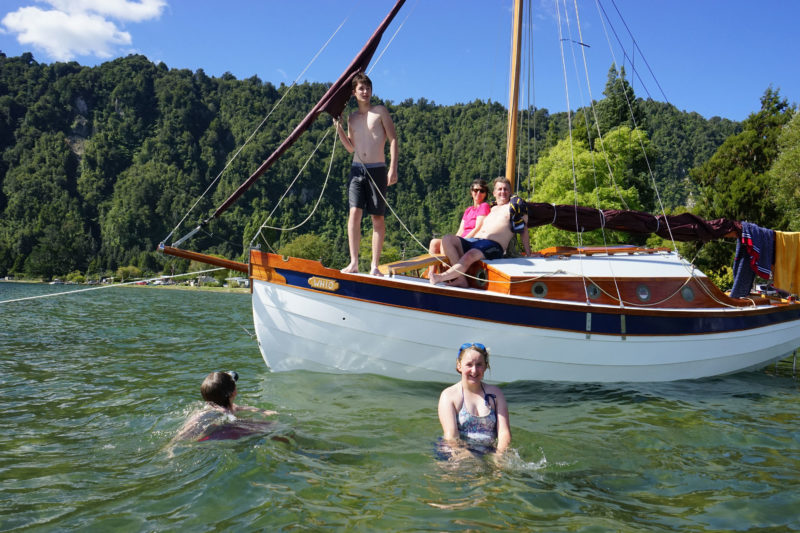
With her centerboard retracted, WHIO can anchor safely in waist-deep water.
He was drawn to Welsford’s Penguin, a 21′ pocket cruiser. It sleeps four, two in the roomy V-berth forward and two berths that extend from the main cabin aft under the cockpit seats. The galley, large enough for a two-burner stove and cookware, opens up to the port side of the main cabin. A portable head sits to starboard off to the side of the passageway to the forward berth. The accommodations were all his family required for extended weekend cruises and yet the Penguin would be small enough to be kept at his home and trailered to their New Zealand cruising grounds.
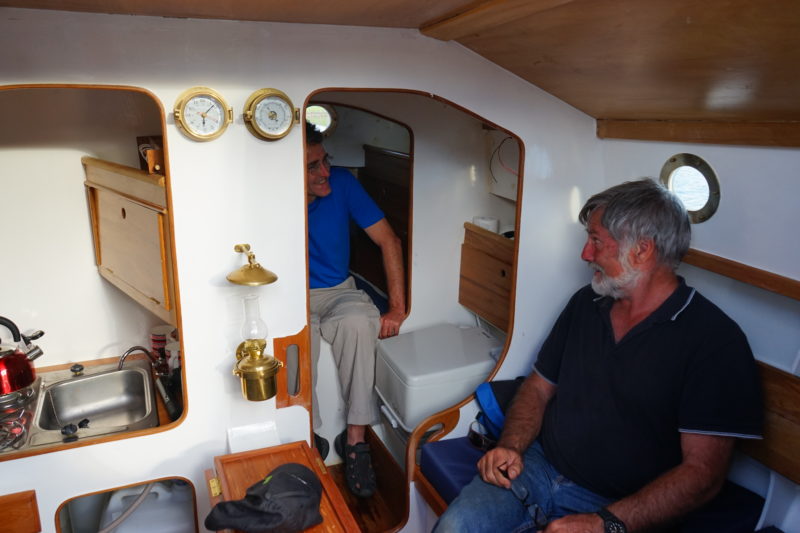
Designer John Welsford (right) pays a visit aboard WHIO. The view looking forward takes in the galley and the portable head head tucked in the passageway to the forward berth.
“When I ordered the building plans from John Welsford I had only very basic shop skills, and enough naivety to fool myself about how long it would actually take to finish the project.” Ralf persisted with occasional help from John and the informative mistakes that slow the going on the steep side of the learning curve. As his skills improved he “looked forward more and more to my time in the workshop. It gave me the satisfaction of doing something real to balance a day job that consists mostly of phone calls, emails and meetings.”
WHIO, named for a New Zealand river duck, emerged over the course of seven years and was launched quietly with just family and one boat-wise friend present. “The first time in our own boat was every bit of the magical experience I had hoped for,” says Ralf. “The kids could swim, jump in the water, play Frisbee and later we could all sit in the cockpit or cabin having a well-deserved cuppa tea or even a handmade espresso.”
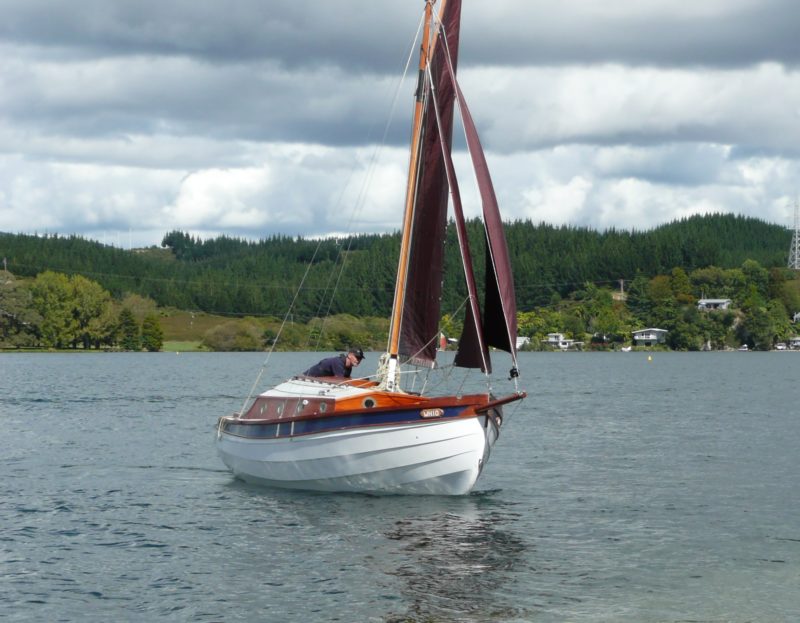
WHIO’s bulder, Ralf Schlothauer, sails Lake Rotoiti, a 9-mile long mountain lake on New Zealand’s North Island.
Ralf made a few modifications as he got to know the boat and WHIO performed beautifully: “The boat feels extremely stable and safe.” With her cutter rig she is very well balanced. “When she heels a slight weather helm emerges as John intended.” WHIO easily reaches 4 to 5 knots and has, so far, peaked at 5.7 knots in about 15 knots of wind. “She is all I had dreamed of and worked for over those long years of building.”![]()
Have you recently launched a boat? Please email us. We’d like to hear about it and share it with other Small Boats Monthly readers.
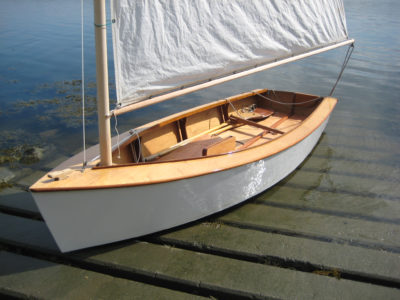
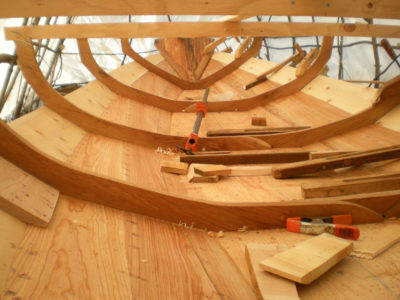
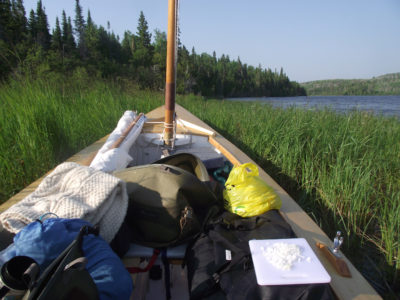
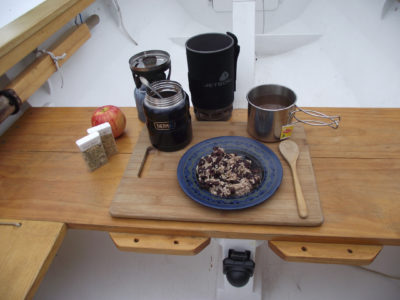
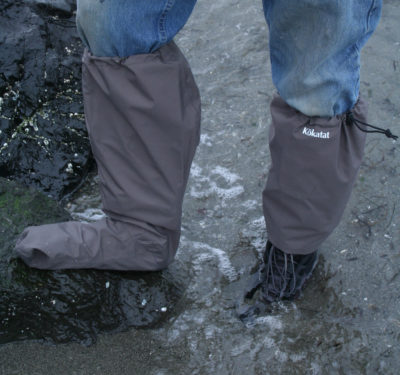
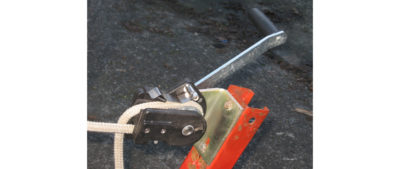
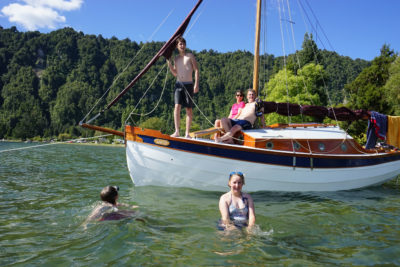
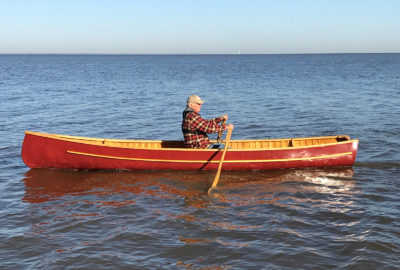
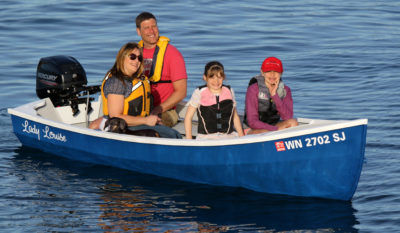
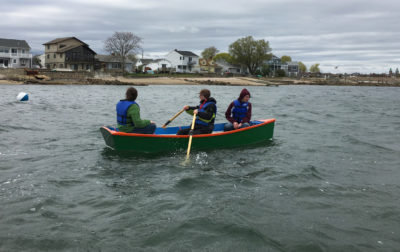
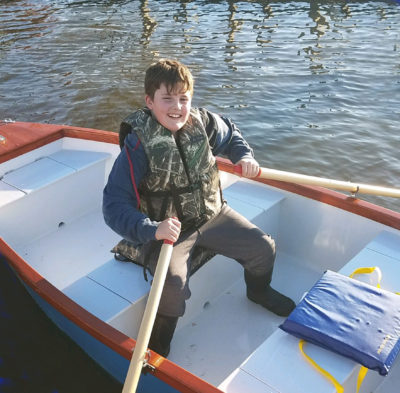
What a lovely sailboat! I am just finishing a Martha’s Tender in a sailing configuration. It’s my first wooden boat and of course I am already shopping for my next one. It would seem that I have found it.
Gorgeous boat, Ralf. The helmsman and sail hauler looks really “boat-wise”.
Well done, she’s lovely to sail in, stable, capable, and reassuring in gusts.
Mark, I just revisited this article to see if I still felt the same about the about the boat. Which I do and saw your name! I’m currently building the spars and mast for the tender so have not had to ask for Sharri’s permission. I did major maintenance to the Oyster and got third place at the Sanilac Wooden Boat Show for my trouble. She is in the water at this moment in Port Hope filling up with water as the rain has been relentless today. I hope that all is well at your end; Sharri and I are still enjoying our retirement with many plans to enjoy more.
Dick
I hope Shari gives her consent. ‘Tis a lovely boat. Give me a shout when you finish her and I’ll bring a tot of Pusser’s.
Absolutely beautiful gaff-rigged clinker, Ralf. Brings back memories of our first sailboat which looked very similar, and we still miss her some 30 odd years later. I hope WHIO always remains in your family.
She is a beauty and perfect for my home waters of Lake Champlain. How may I get the plans?
Plans are available from the designer at:
http://www.jwboatdesigns.co.nz/plans/penguin/
We often provide links to relevant web sites. If you see highlighted text, just click on it and the linked web site will open up. In this case clicking on the design name “Penguin” in the profile (and here) will take you to the web page for the plans.
Christopher Cunningham, Editor, Small Boats Monthly